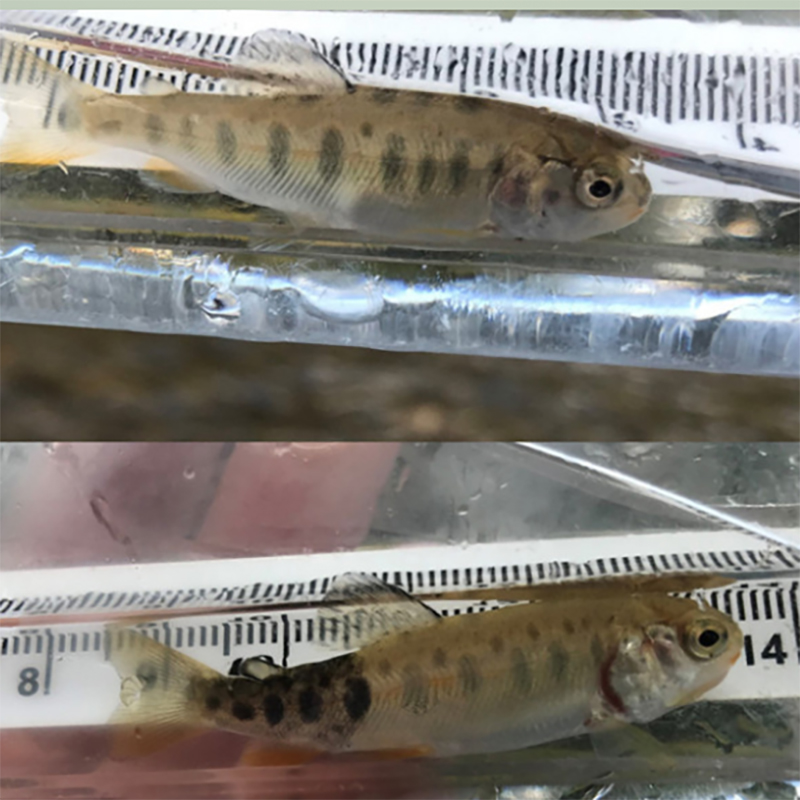AN UPDATE ON WHIRLING DISEASE IN BC’S WATERWAYS
By Wyatt Olsson
On December 6th, 2023, the first case of whirling disease in BC was confirmed by the Canadian Food Inspection Agency (CFIA) in Wapta Lake and Emerald Lake, both located in Yoho National Park. The confirmation of the disease has raised concerns for the province, as it could be spread to other important watersheds in the province. As a precaution, Parks Canada has closed all bodies of water and shorelines in Yoho and Kootenay National Parks to reduce the chance of transmission.
Background
Whirling disease was first introduced to Pennsylvania in 1956 from Europe. The disease has spread to many parts of the continent including Canada. The first confirmed case of whirling disease in Canada was found in Alberta in 2016. Since 2016, it has spread to four major watersheds (the Bow, North Saskatchewan, Oldman, and Red Deer Rivers).
What is Whirling Disease?
Whirling disease is a disease that mainly affects juvenile salmonids such as trout, salmon, and
whitefish. All of the salmon and trout species found in Simpcwú̓lecw are susceptible to whirling disease. It is caused by the parasite Myxobolus cerebralis, which infects the fish through their skin with the use of an aquatic worm host. Once inside the fish, the parasite invades the head, spinal cartilage, and nervous tissue of the fish leading to damage of the brain stem and spinal cord. These damages lead to the erratic whirling swimming behavior seen in the infected fish. Other signs of infection include blackened and/or deformed tails and skull deformities.
 Image: A comparison of a healthy rainbow trout (top) and a rainbow trout exhibiting whirling disease symptoms (bottom). Both fish were captured from the Crowsnest River in Alberta (Gov AB).
Image: A comparison of a healthy rainbow trout (top) and a rainbow trout exhibiting whirling disease symptoms (bottom). Both fish were captured from the Crowsnest River in Alberta (Gov AB).
When the infected fish dies, spores are released in the water and surrounding sediment to seek out aquatic host worms to repeat the cycle again. This disease can cause up to 90% mortality for juvenile fish in susceptible populations. Once infected, there is no known cure or remedy for the fish.
How Is It Spread to New Areas?
Whirling Disease is often spread by humans moving dead or alive fish, transporting water from one river to another, and improper decontamination of gear and boats that come in contact with the water and substrate of a waterbody. Due to the small size of the parasite and its complex life cycle, it is difficult to contain or eradicate from waterbodies once established.
How to Stop the Spread:
- Never move fish or fish parts from one waterbody to another.
- Use fish cleaning stations where available or put fish parts in the local solid waste system. Do not dispose of fish or any fish parts in a kitchen garburator.
- Clean, Drain and Dry boats or any equipment (waders, life jackets, kayaks, etc.) before moving between waterbodies.